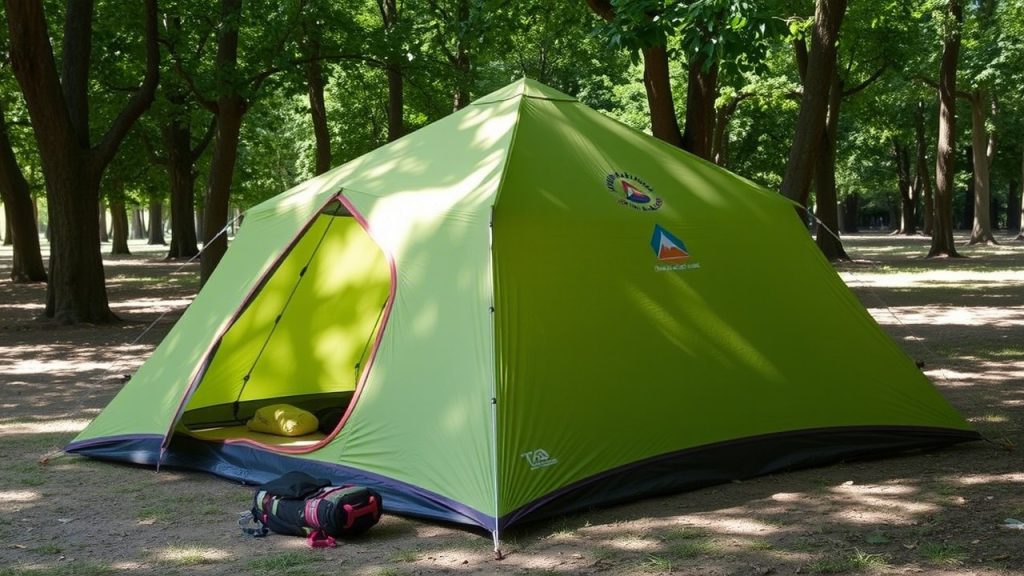Summer camping is a joy clear skies, warm days, and starry nights. But sweltering temperatures and stuffy tents can turn your adventure into a sleepless, sweaty ordeal. The right tent can make all the difference, keeping you cool and comfortable even on the hottest summer nights. We’ve curated the 10 best tent ideas to sleep cooler on summer nights, focusing on ventilation, lightweight materials, and designs that maximize airflow.
Drawing from expert reviews by Outdoor Gear Lab, Switchback Travel, and REI, plus user feedback, these tents are perfect for car camping, backpacking, or festivals in 2025. We’ve also included ten frequently asked questions with detailed answers and practical tips to ensure you stay refreshed under the stars.
Why a Cool Tent Matters for Summer Camping
Summer nights can stay warm, especially in humid regions or low elevations, where temperatures linger above 70°F. A poorly ventilated tent traps heat and moisture, leading to condensation, discomfort, and restless sleep. A tent designed for summer camping prioritizes:
- Maximized Airflow: Large mesh panels and multiple vents allow breezes to circulate.
- Lightweight Fabrics: Thin, breathable materials reduce heat retention.
- Strategic Design: High ceilings, light colors, and open layouts enhance cooling.
- Versatile Rainflies: Partial or removable rainflies balance protection and ventilation.
Our picks include 3-season tents optimized for warm weather, with features like extensive mesh, adjustable vents, and easy setups. Whether you’re car camping in a state park or backpacking in the desert, these tents will help you sleep cooler and wake up ready for adventure.
Top 10 Tent Ideas to Sleep Cooler on Summer Nights
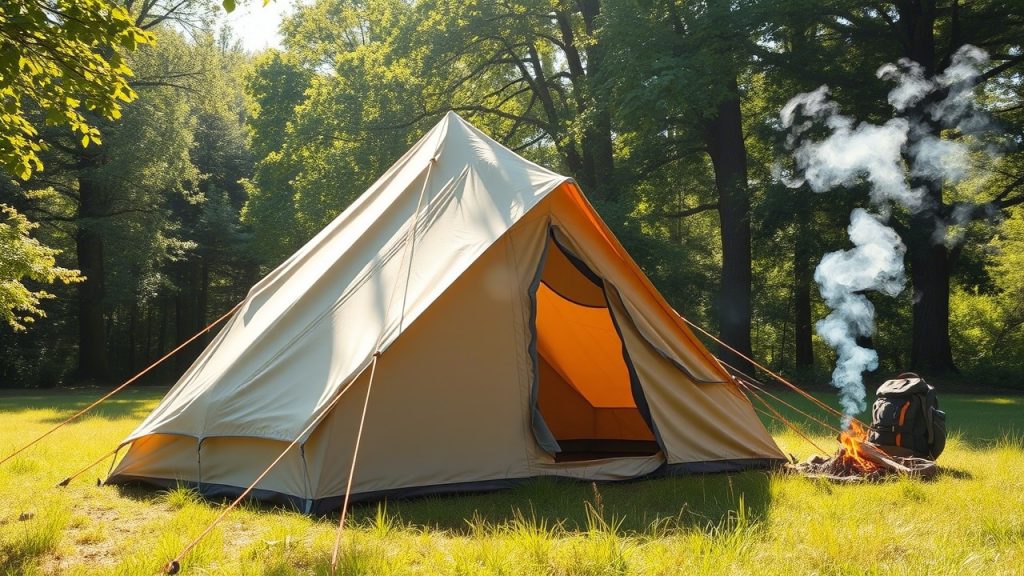
1. REI Co-op Half Dome SL 2+
- Best for: Budget-friendly backpacking or car camping
- Capacity: 2-person
- Key Features: 4 lb 13 oz, 33.8 sq. ft. floor, 90% mesh canopy, two large vents, 44-inch peak height
- Why We Love It: The Half Dome SL 2+ is a ventilation superstar, with a 90% mesh canopy that invites breezes while keeping bugs out. Two oversized roof vents and a 40D ripstop nylon rainfly (1500mm) with kickstand poles create a chimney effect, pulling hot air out—perfect for humid Midwest campgrounds. The 33.8 sq. ft. floor and 44-inch peak height feel spacious, and two 11.25 sq. ft. vestibules store gear. Setup takes 5–7 minutes with color-coded poles, ideal for beginners. Testers praise its cooling in Florida’s muggy summers, though the heavier weight suits shorter hikes or car camping.
2. Big Agnes Copper Spur HV UL2
- Best for: Ultralight backpacking
- Capacity: 2-person
- Key Features: 2 lb 11 oz, 29 sq. ft. floor, 80% mesh body, dual roof vents, 20D nylon, 40-inch peak height
- Why We Love It: This ultralight tent excels in warm weather, with an 80% mesh body for panoramic airflow and stargazing. Dual high-low vents (roof and base) promote cross-ventilation, tested in Arizona’s desert heat. The 20D nylon rainfly (1200mm) can be partially rolled back for extra breeze or fully deployed in rain. Its 29 sq. ft. floor and two 9 sq. ft. vestibules suit couples, and setup takes 3–5 minutes with DAC Featherlite poles. Users love its breathability on the John Muir Trail, but the thin 15D floor needs a footprint on rocky sites.
3. Nemo Aurora Highrise 4P
- Best for: Family car camping
- Capacity: 4-person
- Key Features: 14 lb 12 oz, 62.2 sq. ft. floor, 70% mesh walls, panoramic windows, 75-inch peak height
- Why We Love It: The Aurora Highrise 4P is a breezy palace for families, with 70% mesh walls and massive windows that maximize airflow in hot Texas campgrounds. Its 75-inch peak height and near-vertical walls create an airy interior, and the light blue canopy reflects heat. The 68D polyester rainfly (1200mm) has vented panels for circulation, and setup takes 8–10 minutes with color-coded poles. Two 11 sq. ft. vestibules store gear, but its weight limits it to car camping. Testers highlight its cooling in humid Southeast summers.
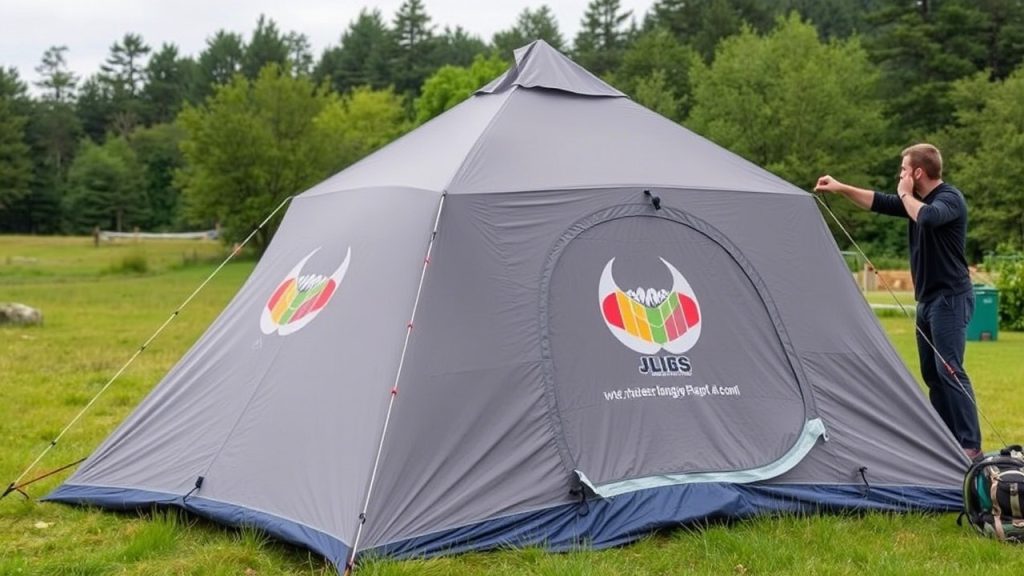
4. Kelty Late Start 2
- Best for: Budget car camping or short hikes
- Capacity: 2-person
- Key Features: 4 lb 8 oz, 29.5 sq. ft. floor, 60% mesh canopy, adjustable rainfly vents, 40-inch peak height
- Why We Love It: The Late Start 2 balances affordability and ventilation, with a 60% mesh canopy and a 68D polyester rainfly (1800mm) featuring adjustable vents for customizable airflow. Its Quick-Corner pole system allows a 4-minute setup, perfect for late arrivals at California coastal sites. The 29.5 sq. ft. floor and 10 sq. ft. vestibule suit solo campers or cozy couples, and the light gray fabric minimizes heat absorption. Users praise its cooling in Nevada’s dry heat, though it’s less spacious than larger tents.
5. MSR Elixir 2
- Best for: Durable backpacking
- Capacity: 2-person
- Key Features: 5 lb 12 oz, 29 sq. ft. floor, 70% mesh body, dual roof vents, 40-inch peak height
- Why We Love It: The Elixir 2 is built for durability and breathability, with a 70% mesh body that promotes airflow in humid Appalachian summers. Two roof vents and a 70D ripstop nylon rainfly (1500mm) with roll-back options ensure ventilation, while the 68D floor withstands rough terrain. Its 29 sq. ft. floor and two 9 sq. ft. vestibules offer ample space, and setup takes 5–7 minutes with hubbed poles. Testers commend its cooling in North Carolina’s muggy forests, but its weight suits shorter hikes.
6. Marmot Tungsten 2P
- Best for: Versatile backpacking
- Capacity: 2-person
- Key Features: 4 lb 10 oz, 32 sq. ft. floor, 65% mesh canopy, vented rainfly, 43-inch peak height
- Why We Love It: The Tungsten 2P is a ventilation champ, with a 65% mesh canopy and a 40D nylon rainfly (1800mm) featuring multiple vents for cross-breezes. Its 32 sq. ft. floor and two 9.3 sq. ft. vestibules provide generous space, and pre-bent poles create a roomy 43-inch peak height. Setup takes 4–6 minutes with color-coded clips, ideal for Colorado’s warm alpine nights. Users love its breathability in Utah’s Zion National Park, though the rainfly needs careful tensioning to avoid sagging in rain.
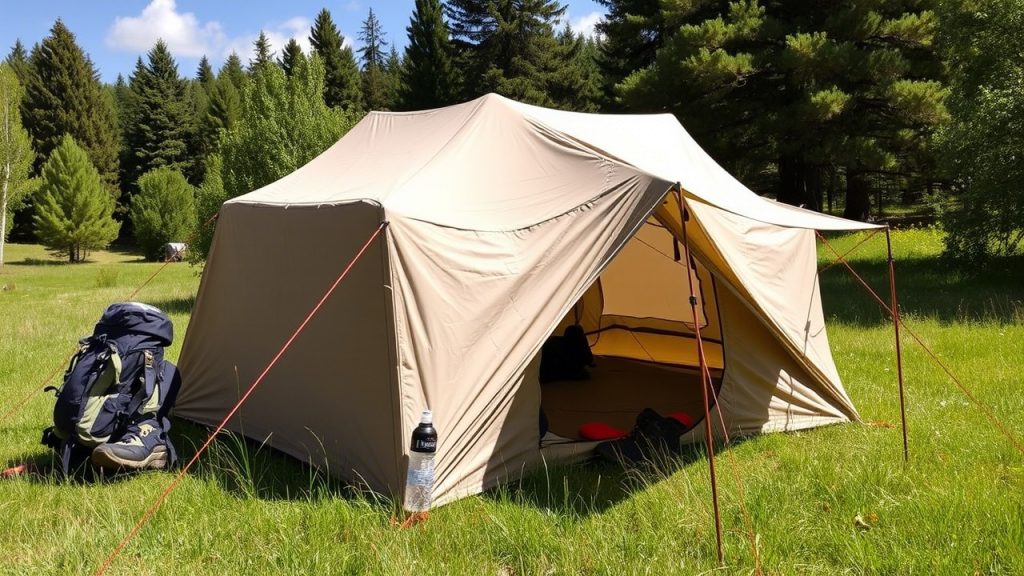
7. Sea to Summit Alto TR2
- Best for: Ultralight ventilation
- Capacity: 2-person
- Key Features: 2 lb 11 oz, 27 sq. ft. floor, 85% mesh canopy, Tension Ridge pole, 42.5-inch peak height
- Why We Love It: The Alto TR2 uses a Tension Ridge pole to lift the 85% mesh canopy, maximizing airflow and headroom for hot Australian outback nights. Its 15D nylon rainfly (1200mm) has apex vents and can be rolled back for stargazing. The 27 sq. ft. floor is snug for two, but two 9.5 sq. ft. vestibules store gear. Setup takes 3–5 minutes with a single hubbed pole. Testers praise its cooling in New Mexico’s desert, but the delicate 15D floor requires a footprint.
8. Eureka Suma 3
- Best for: Budget group camping
- Capacity: 3-person
- Key Features: 4 lb 11 oz, 36 sq. ft. floor, 60% mesh walls, high-low vents, 45-inch peak height
- Why We Love It: The Suma 3 is a budget-friendly option with a 60% mesh canopy and high-low vents that drive airflow in humid Tennessee summers. Its 68D polyester rainfly (1800mm) and 75D floor handle light rain, and the 36 sq. ft. floor suits two with gear or three snugly. A 6.7 sq. ft. vestibule stores essentials, and setup takes 5–7 minutes with simple poles. Users appreciate its cooling in Georgia’s warm forests, though the single door limits access for groups.
9. Kazoo Outdoor Camping Tent
- Best for: Solo or couple hot-weather camping
- Capacity: 2-person
- Key Features: 4 lb 5 oz, 27 sq. ft. floor, 6-sided mesh design, 360-degree vents, 43-inch peak height
- Why We Love It: The Kazoo’s unique 6-sided design maximizes mesh coverage, offering 360-degree airflow for scorching Nevada nights. Its 190T polyester rainfly (2000mm) has roll-up panels for ventilation, and the 27 sq. ft. floor suits solo campers or cozy couples. A 10 sq. ft. vestibule stores gear, and setup takes 4–6 minutes with aluminum poles. Testers love its breathability in Arizona’s Sonoran Desert, but it’s best for mild, dry conditions due to the minimal rainfly.

10. Coleman Sundome 4
- Best for: Budget car camping
- Capacity: 4-person
- Key Features: 9 lb 8 oz, 63 sq. ft. floor, 50% mesh walls, ground vents, 59-inch peak height
- Why We Love It: The Sundome 4 is a classic budget tent with 50% mesh walls and ground vents that pull in cool air for warm Oklahoma summers. Its 75D polyester rainfly (1000mm) offers basic rain protection, and the 63 sq. ft. floor fits families or groups. Setup takes 8–10 minutes with fiberglass poles, and a 9 sq. ft. vestibule stores gear. Users praise its cooling in Texas state parks, but its weight and lower waterproofing suit car camping in mild weather.
Key Features for a Cool Summer Tent
To sleep cooler on summer nights, prioritize these features:
- Extensive Mesh: 50%+ mesh canopies (e.g., REI Half Dome’s 90%) maximize airflow and reduce heat buildup.
- Ventilation Systems: High-low vents, roof vents, or ground vents (e.g., Nemo Aurora’s panoramic windows) create a chimney effect.
- Light Colors: White, light gray, or blue fabrics (e.g., Kelty Late Start’s gray) reflect sunlight, keeping interiors cooler.
- Adjustable Rainflies: Roll-back or vented rainflies (e.g., Big Agnes Copper Spur’s dual vents) balance protection and airflow.
- High Ceilings: Peak heights above 40 inches (e.g., Coleman Sundome’s 59 inches) prevent trapped hot air.
- Breathable Fabrics: Thin 15D–40D nylon or polyester (e.g., Sea to Summit Alto’s 15D) minimizes heat retention.
- Easy Setup: Color-coded poles or simple designs (e.g., MSR Elixir’s hubbed poles) save time in sticky heat.
Tips for Sleeping Cooler in Your Tent
- Choose a Shaded Site: Pitch under trees or in a valley to block midday sun, but avoid low spots that trap heat or collect dew.
- Optimize Ventilation: Open all vents and roll back rainfly panels during dry nights to maximize airflow.
- Use a Fan: A small, battery-powered fan (e.g., USB-rechargeable camping fans) boosts circulation inside the tent.
- Sleep Low: Place your sleeping pad on the tent floor, as hot air rises to the ceiling.
- Pick Breathable Gear: Use a lightweight, moisture-wicking sleeping bag (e.g., 40°F-rated) or a camping quilt to stay cool.
- Pitch Strategically: Face mesh doors or windows into the breeze for natural airflow, using a wind app to check direction.
- Remove the Rainfly: On clear nights, skip the rainfly for maximum ventilation, but keep it handy for sudden showers.
- Stay Hydrated: Drink water before bed to regulate body temperature and prevent overheating.
- Use a Reflective Tarp: Hang a lightweight tarp or mylar blanket above your tent to reflect sunlight, reducing interior heat.
- Test Your Tent: Practice setup and vent adjustments at home in warm weather to optimize cooling before your trip.
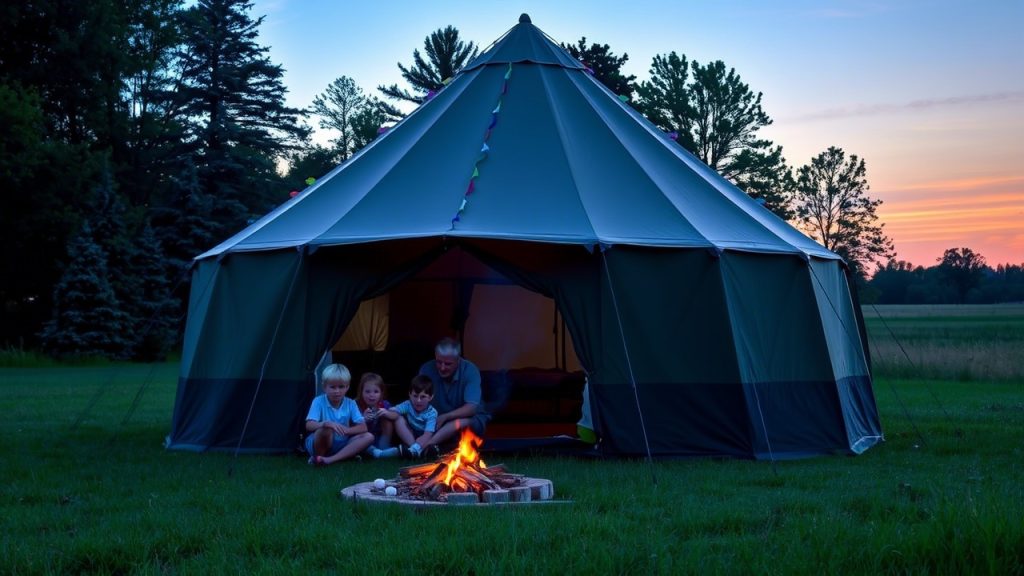
Caring for Your Summer Tent
To keep your tent cool and functional for years:
- Dry Thoroughly: Hang or pitch to dry after trips to prevent mold, especially in humid summer conditions.
- Clean Gently: Use a sponge and Nikwax Tech Wash to remove dirt; avoid machine washing, which damages coatings.
- Store Properly: Keep in a breathable bag in a cool, dry place to avoid fabric degradation.
- Repair Promptly: Patch tears with Gear Aid Tenacious Tape and replace damaged poles or zippers.
- Refresh Waterproofing: Apply Nikwax Tent & Gear SolarProof every 1–2 years to maintain rainfly performance.
10 Frequently Asked Questions About Summer Tents
1. What makes a tent ideal for sleeping cooler in summer?
A summer tent needs 50%+ mesh for airflow, high-low vents for circulation, and light-colored, breathable fabrics (15D–40D nylon) to reflect heat. Features like adjustable rainflies and high ceilings (e.g., Nemo Aurora Highrise’s 75 inches) prevent heat buildup. The REI Half Dome SL 2+ excels with its 90% mesh canopy and dual vents.
2. How important is mesh in a summer tent?
Mesh is critical for ventilation, allowing breezes to cool the interior and reduce condensation. Tents with 60%+ mesh (e.g., Big Agnes Copper Spur’s 80%) are ideal for hot, humid climates like the Southeast, but ensure the rainfly provides full coverage for sudden storms.
3. Can I use a 4-season tent for summer camping?
4-season tents have less mesh and thicker fabrics for warmth, trapping heat in summer. They’re overkill for warm nights, causing discomfort in humid or desert conditions. Stick to 3-season tents like the MSR Elixir 2 with extensive mesh for better cooling.
4. How do I maximize airflow in my tent?
Open all vents, roll back rainfly panels, and face mesh doors into the breeze. Use a battery-powered fan, sleep low on the floor, and remove the rainfly on clear nights. Tents like the Sea to Summit Alto TR2 with apex vents excel at cross-ventilation.
5. Why do light-colored tents stay cooler?
Light colors (white, gray, blue) reflect sunlight, reducing heat absorption compared to dark greens or reds. The Kelty Late Start’s light gray fabric keeps the interior 5–10°F cooler, ideal for sunny Southwest campsites.
6. Are ultralight tents better for summer camping?
Ultralight tents (1–3 lbs.) like the Nemo Hornet Osmo use thin, breathable fabrics (15D nylon) that reduce heat retention, making them great for summer backpacking. However, heavier tents (e.g., Coleman Sundome) with larger mesh areas can cool better for car camping.
7. How do I prevent condensation in a summer tent?
Condensation forms in humid summer conditions. Choose double-wall tents with mesh (e.g., Marmot Tungsten 2P), open vents during dry spells, and store wet gear in vestibules. A microfiber towel wipes down walls, and fans improve airflow in muggy climates.
8. What’s the best tent size for summer camping?
Solo campers can use 1P or snug 2P tents (e.g., Kazoo Outdoor); couples need 30+ sq. ft. (e.g., REI Half Dome’s 33.8 sq. ft.). Families should opt for 4P+ tents (e.g., Nemo Aurora’s 62.2 sq. ft.) for airflow and comfort. Upsize for extra ventilation.
9. How do I choose a tent for hot, humid vs. hot, dry climates?
In humid climates (e.g., Southeast), prioritize 70%+ mesh and high-low vents (e.g., Eureka Suma 3). In dry climates (e.g., Southwest), focus on light-colored fabrics and roll-back rainflies (e.g., Big Agnes Copper Spur) for ventilation without moisture concerns.
10. How long should a summer tent last?
With proper care—drying, gentle cleaning, and loose storage—a quality summer tent lasts 10–15 years or 100–150 trips. Tents like the MSR Elixir 2 with durable 70D fabrics withstand frequent use, while ultralight models (e.g., Sea to Summit Alto) need careful handling.
Conclusion
Sleeping cooler on summer nights transforms your camping experience, letting you rest deeply and embrace the day’s adventures. From the ultralight Big Agnes Copper Spur HV UL2 to the family-friendly Nemo Aurora Highrise 4P, our 10 tent picks are designed to keep you comfortable in the heat. Prioritize mesh, vents, and light fabrics, and use our tips to optimize your setup. With the right tent, you’ll drift off under the stars, cool and content, ready for summer’s next sunrise.

